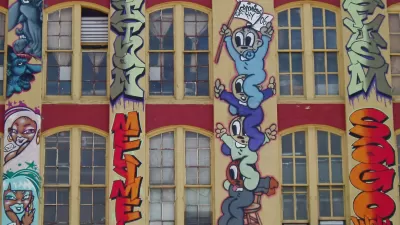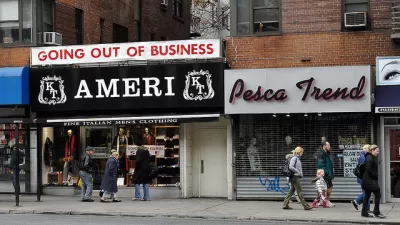The days of creeping gentrification are over. Contance Rosenblum reports on the New York artists who "rush about pell-mell in search of fresh terrain to colonize" and blows the cover on three of their up and coming territories.
Cheap rent, low crime, like-minded people and easy access to transit are key characteristics that draw artists to a neighborhood. Rosenblum explores three neighborhoods that each have the necessary traits for hipsterization, but for reasons explained in the article, "might not have the grit and authenticity of those that came before."
Stapleton, Staten Island, is fairly removed from NYC happenings, but the arts culture is well recognized and thriving. Similarly, Ridgewood in Queens is gaining attention as an attractive location for young artists. Recently, Gothamist ran the headline, "Local Paper Declares Next Big Neighborhood: Ridgewood". Though the neighborhood is primarily residential and lacks much of the studio space artists seek in a community, newcomer Matthew Mahler points out it's relatively safe, close to the train and he pays only only $600 for a 2 bedroom space.
The stretch of Upper Broadway between the Columbia campuses is another area of NYC that has seen an influx of young people pursuing artistic endeavors. Playwright, Claire Kiechel pays less than $700 for her portion of an apartment she shares with actor Sarah Skeist, who likes the neighborhood because of her proximity to fellow actors. Kiechel admits the neighborhood is not much to look at yet and "coffee is a major problem. And there are no local bars that serve craft beer."
She probably won't have to wait long for the neighborhood to fill with hipster amenities, though. In these days of rapid fire communication it's easy to keep abreast of up and coming trends in real estate. As author Rober Anasi points out, "Artists' neighborhoods turn over so quickly these days...The speculators are there practically before the artists themselves."
Thanks to Jessica Brent
FULL STORY: Follow the Drips of Paint

Alabama: Trump Terminates Settlements for Black Communities Harmed By Raw Sewage
Trump deemed the landmark civil rights agreement “illegal DEI and environmental justice policy.”

Study: Maui’s Plan to Convert Vacation Rentals to Long-Term Housing Could Cause Nearly $1 Billion Economic Loss
The plan would reduce visitor accommodation by 25% resulting in 1,900 jobs lost.

Why Should We Subsidize Public Transportation?
Many public transit agencies face financial stress due to rising costs, declining fare revenue, and declining subsidies. Transit advocates must provide a strong business case for increasing public transit funding.

Paris Bike Boom Leads to Steep Drop in Air Pollution
The French city’s air quality has improved dramatically in the past 20 years, coinciding with a growth in cycling.

Why Housing Costs More to Build in California Than in Texas
Hard costs like labor and materials combined with ‘soft’ costs such as permitting make building in the San Francisco Bay Area almost three times as costly as in Texas cities.

San Diego County Sees a Rise in Urban Coyotes
San Diego County experiences a rise in urban coyotes, as sightings become prevalent throughout its urban neighbourhoods and surrounding areas.
Urban Design for Planners 1: Software Tools
This six-course series explores essential urban design concepts using open source software and equips planners with the tools they need to participate fully in the urban design process.
Planning for Universal Design
Learn the tools for implementing Universal Design in planning regulations.
Smith Gee Studio
Alamo Area Metropolitan Planning Organization
City of Santa Clarita
Institute for Housing and Urban Development Studies (IHS)
City of Grandview
Harvard GSD Executive Education
Toledo-Lucas County Plan Commissions
Salt Lake City
NYU Wagner Graduate School of Public Service





























